Five Takeaways From Harley-Davidson’s Q3 2024 Results

Harley-Davidson reported its third quarter earnings, and the results, as one might expect, were not very good. Harley-Davidson Inc., encompassing the Motor Company, its financial services division, and LiveWire, reported $1.151 billion in total revenue for the quarter, a 26% decline from last year.
You can read more about Harley-Davidson’s Q3 numbers here, but here are five things we found particularly interesting.
Motorcycle Sales are down
Worldwide retail sales for Harley-Davidson were down 13% over the third quarter compared to the same period of 2023. This includes a 10% decline in North America, a 23% drop in the Europe, Middle East and Africa region, and down 16% in the Asia Pacific region. The only one of Harley-Davidson’s reporting regions that saw growth was Latin America, which went up 4% on the quarter.
The numbers look even bleaker when you look at revenues from motorcycle sales, which came in at $616 million. That’s a 40% decline from the $1.023 billion reported in the previous year. Factoring in parts and accessories, apparel, and product licensing, Harley-Davidson’s motorcycle operations reported an operating income of $55 million, down from $175 million. Of these revenue streams, only apparel sales saw growth in the quarter, increasing by 13%.
None of this is good news, of course, but we’re not going to start putting together think pieces about The Motor Company going under, like we see popping up every time Harley-Davidson has a bad quarter.
Taking a step back and looking at the broader picture, we know that Harley-Davidson is not alone in having a down three months. H-D’s most direct competitor, Polaris’ on-road division (consisting mainly of Indian Motorcycle and Slingshot), reported a 13% decline in sales over the same period, with a gross profit margin of 16.9%, compared to Harley-Davidson Motor Company’s 30.1% margin.
Meanwhile, over in Austria, things are so dire that Pierer Mobility has cancelled its guidance for the rest of the fiscal year while reducing its executive board from six to just two members.
While every company deals with its own individual factors, it’s not hard to see that the overall motorcycle industry had a difficult quarter. Polaris’ Q3 report cited an industry-wide decline in North American retail sales in the high single digits (with Indian itself in the low double digits) percentage. Internationally, Polaris said the industry is down in the mid-double digits.
Viewed through this lens – notably not Harley’s, but its main competitor with a primarily cruiser and touring focus – Harley-Davidson’s numbers are pretty much in line. Again, this isn’t to brush aside the fact that Harley-Davidson had a bad quarter. It’s just to point out that a lot of other brands did as well.
Why Sales Are Down
Pointing out the problem is one thing. Identifying why it’s happening is another. Speaking in Harley-Davidson’s Q3 presentation, Jochen Zeitz, chairman, president and chief executive officer cited high interest rates, macroeconomic uncertainty, and political uncertainty as having a negative impact on the industry.
The Federal Reserve just cut interest rates last month, the first such cut since March 2020. That should help, but it will take a while to see the effects of the rate cut (Harley-Davidson’s quarter ended just two weeks after the cut was announced).
Political uncertainty is more specific to the U.S. as, in case you haven’t heard, it’s an election year. We’ll know how that will shake out soon enough.
These factors will bleed into the fourth quarter, so we don’t expect Harley-Davidson to have a miraculous comeback through the rest of the year. We should also expect a negative effect from the hurricanes that hit the East Coast over the last month carrying into the Q4 numbers.
The New CVO and Touring Models Are A Bright Spot
If there was one positive note from Harley-Davidson’s results, it’s the performance of its latest touring and Custom Vehicle Operations models.
While overall sales are down, Harley-Davidson claims a double-digit growth in CVO sales. Granted, that’s because there are four CVO models this year compared to just two last year, with the new CVO Pan America and CVO Road Glide ST joining the returning CVO Road Glide and CVO Street Glide.
The touring lineup, led by the updated Street Glide and Road Glide, saw a 10% increase in the third quarter compared to last year, and a gain of four percentage points of U.S. touring market share.
LiveWire Continues to Lose Money, Just Not For The Reasons You Think
To no surprise, the LiveWire Group reported another net loss over the third quarter, losing $22.7 million during the period. That’s a deeper loss than the $14.6 million reported in Q3 of 2023.
The reflexive reaction to this news is that Harley-Davidson’s electric motorcycle experiment is a failure. That may turn out to be true down the line, but that’s not our takeaway from this quarter specifically.
LiveWire reported sales of 99 motorcycles in the third quarter, an increase from 50 bikes sold in the same period last year. This was mostly driven by the introduction of the S2 Del Mar and S2 Mulholland, increasing the electric motorcycle product line. That’s a 98% increase in unit sales, but honestly, the volume numbers are still so low that percentage changes are irrelevant.
What’s more notable is that sales of STACYC balance bikes have seen a dramatic drop off, going from 7,231 units last year to just 3,442 units in this past quarter. LiveWire attributed the decline to a reduction in third-party branded distributor volumes.
Electric motorcycle revenue reached $1.2 million, a small drop from $1.3 million last year despite the increase in unit sales. This is the expected result from the lower-priced S2 models surpassing sales of the much more expensive LiveWire One. STACYC revenues, however, saw a year-over-year drop to $3.2 million from $6.8 million. That means that consolidated revenue totaled just $4.4 million compared to $8.1 million last year. It also means that electric motorcycle sales are beginning to represent a larger percentage of LiveWire’s total revenue.
Of course, revenues are only part of the picture, with cost reduction being a more immediate concern. LiveWire has already started working on that by relocating its operations from California to the parent company’s home in Milwaukee. LiveWire has also reduced its workforce by 30% heading into 2025.
LiveWire is also looking to add to its product offerings, with the brand confirming that it will announce a new product segment at EICMA. Calling it a “product segment” and not “motorcycle” is interesting, as it implies it won’t be another S2 model or a LiveWire One variant. It’s possible it will be an S3 model, using a lower-powered version of the S2’s Arrow architecture, but it’s also possible LiveWire will bring to production of the lightweight concepts it showcased back in 2019. We’ll know soon enough at EICMA.
Keeping Tabs on the Competition
It’s very rare for a company to mention its competitors specifically during its earnings report, but it was interesting to see a minor acknowledgement, even in a footnote, for the new Indian Scout.
Harley-Davidson typically lists its market share position for motorcycles 600cc and larger, and that continued with the Q3 results. What has changed is a footnote for Harley-Davidson’s share of the “U.S. Large Cruiser” segment. Starting with the third quarter, Harely-Davidson now defines “large cruisers” as a product displacing 1,201cc or larger. A further footnote explains that the definition was adjusted “due to a change by a competitor’s product offering in late Q2 ’24 moving it from the small cruiser to large cruiser category.”
This, of course, refers to the new Indian Scout, which now displaces 1,250cc compared to the previous 1,113cc.
Was this a particularly significant point in the grand scheme of things? No. But it did make me chuckle.
Become a Motorcycle.com insider. Get the latest motorcycle news first by subscribing to our newsletter here.

Dennis has been a part of the Motorcycle.com team since 2008, and through his tenure, has developed a firm grasp of industry trends, and a solid sense of what's to come. A bloodhound when it comes to tracking information on new motorcycles, if there's a new model on the horizon, you'll probably hear about it from him first.
More by Dennis Chung


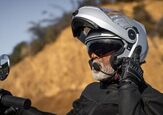








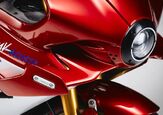
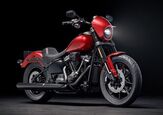
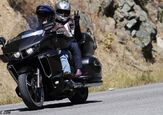
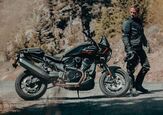
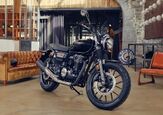



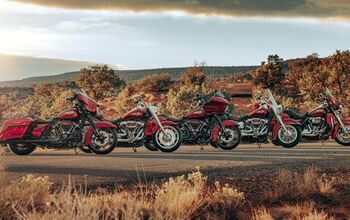
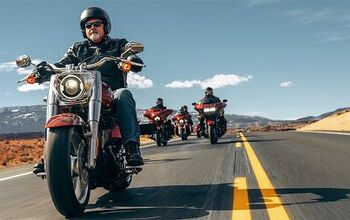




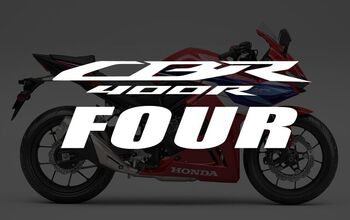



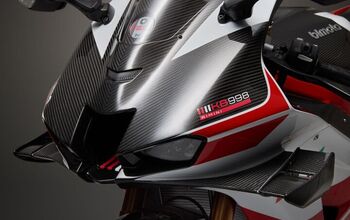
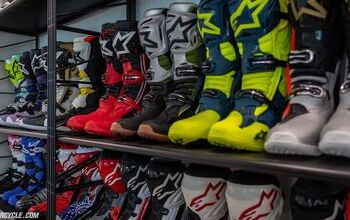

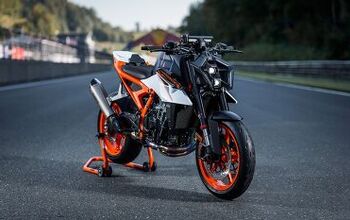

Comments
Join the conversation
I like what Harley has done with the 2024 touring models. Price-wise, they're in line with the upper-level offerings from Honda, BMW, and Ducati, and aside from a set of slip-ons, they don't really need much. They're better than a Stage 2 twin-cam, and similar to a Stage 2 Rushmore model. Compared to the past, I think they're offering better value. I'm sure the aftermarket isn't thrilled. Problem is, at the local dealer, it's kind of all or nothing. The used bike lineup primarily consists of touring models. The new bike lineup also consists primarily of touring models. There's a smattering of Heritage and Fat Boys thrown in for good measure, and then a few Sportsters and Enfields towards the parts counter. Not a large selection, really. And while the customers show up in good (leathery) numbers on the weekends, very few are actually riding a newer bike. Maybe the new models are an effort to appeal to a new group of riders; the same folks who might cross shop a K1600 or 1250RT, or Multistrada, GS, or Goldwing. I hope Harley continues to introduce well-equipped motorcycles with cutting edge technology, and maybe even a few in the sub-$20K range. Discriminate riders may take notice.
I predict H-D will go under, just a matter of time --- probably a short time at that. I owned one Harley, but never again. They won't be missed by sport moto enthusiasts.